Aviation - Multi-agency collaboration
On this page:
Multi-agency collaboration
WSDOT-managed airports often collaborate with multiple agencies to host rescue training and provide staging areas for wildland fire managment.
Performance analysis
2024
WSDOT-managed airports support key staging areas for the Pioneer wildfire emergency response in 2024
On June 8, 2024, while on a return flight to the Chelan Airport from the Stehekin State-Managed Airport, pilot and Adopt-an-Airport Program volunteer Paul Lerma of Lake Chelan Helicopters, spotted an early-stage wildland fire on the north side of Lake Chelan located in the Lake Chelan-Sawtooth Wilderness Area.
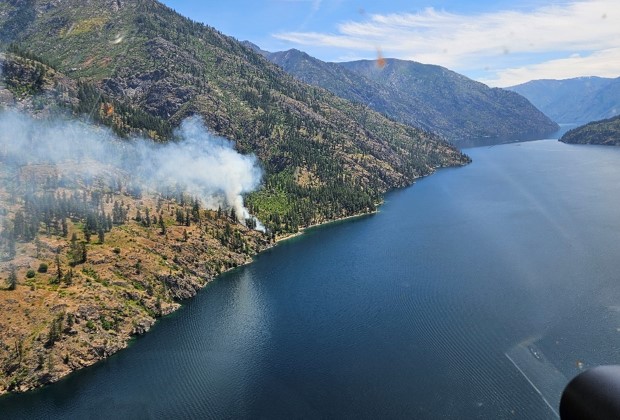
Lerma, accompanied by State Airports Manager Paul Wolf, reported the fire location to authorities. The fire was located on the opposite shoreline near Lucerne and was climbing uphill and into the forest canopy. It spread into a 600-acre fire overnight.
Named the Pioneer Fire, it grew to 3,811 acres by June 17 and required evacuation zones along Lake Chelan.
By June 26, the U.S. Department of Agriculture Forest Service established a helibase at the Methow Valley State Airport in Winthrop to support emergency response efforts.
On June 28, Methow Valley State Airport accommodated three Type 1 helicopters in support of emergency response efforts. These helicopters can typically carry and drop 700 gallons of water or retardant, while working closely with ground personnel and other firefighting aircraft.
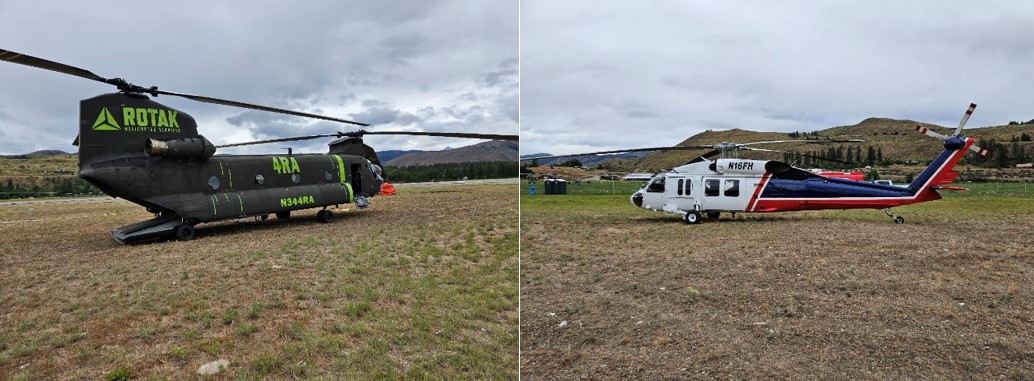
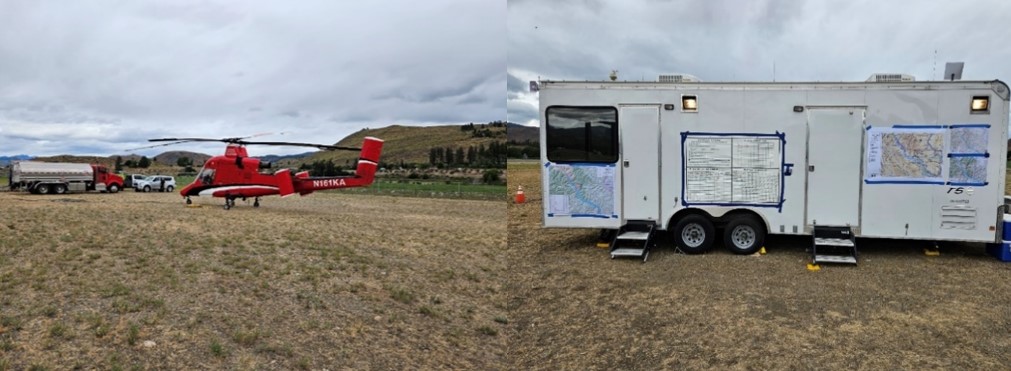
Aircraft support crews set up mobile equipment trailers, an air traffic control trailer, a water pond, and a dust abatement sprinkler system all while making sure the airport could remain open to the public.
As the fire increased in size, the community of Stehekin, located 31 miles northwest of Chelan, became the headquarters of the firefighting operations. The Stehekin Airport was closed to public flights and was designated an evacuation point and heliport operations area for equipment and staffing transfers.
By July 26, 2024, the Pioneer Fire had grown to 31,906 acres, was 14% contained, and the Methow Valley and Stehekin State Managed Airports were supporting helibase staging operations.
At its peak, the Pioneer Fire covered 38,735 acres but did not destroy any primary structures thanks to the work of fire response units and local citizens. The staging operations at Stehekin Airport lasted until Oct. 5, 2024, when the fire was declared fully contained after three weeks of inactivity.
The Lake Wenatchee, Tieton, Easton, and Bandera state airports also contributed to summer 2024 wildfire fighting response efforts, which included short-term staging operations as part of fast strike fire responses. State-managed airport access for summer wildfire response typically includes quick turnaround aircraft refueling, and staging areas for equipment, crew, and supplies transfers.
WSDOT's Adopt-an-Airport Program plays a critical role for state-managed airports preservation and maintenance activities in 2024
WSDOT Aviation preservation and maintenance support comes in part from the Adopt-an-Airport Program volunteer sponsors.
The Adopt-an-Airport Program allows any individual, group or organization to sponsor one or more of the state-managed airports. Sponsoring pilots, civic clubs, and other aviation enthusiasts can contribute to the airport and community while helping with preservation and maintenance activities for the state-managed airports system.
Volunteer sponsor groups include but are not limited to local chapters from the Washington Pilots Association, Experimental Aircraft Association, Recreational Aviation Foundation, Boeing Employees Flying Association, and can include support from youth groups like the Scouts of America, local colleges, Civil Air Patrol, and other interested pilots and friends of aviation. Sponsors typically schedule annual spring work parties starting in May and can run through August each year.
The airport volunteer sponsors representing the following airports play a key role in defraying costs of preservation and maintenance, which in turn helps extend biannual budgets:
- Bandera State Airport — Fall City Pilots/Civil Air Patrol Cadets from the Overlake Composite Squadron U.S. Air Force Auxiliary
- Ranger Creek State-Managed Airport — Washington Pilots Association Green River Chapter/Scouts of America/local community and technical colleges
- Lower Granite State-Managed Airport — WPA Spokane Chapter/Scout Troop 313 Spokane
- Little Goose State-Managed Airport — WPA/Experimental Aircraft Association (EAA) Tri-Cities Chapters
- Skykomish State Airport — WPA Paine Field Chapter
- Stehekin State-Managed Airport — Interested Pilots / WPA Methow Valley Chapter
- Sullivan Lake State-Managed Airport — WPA Deer Park Chapter / Recreational Aviation Foundation
- Easton State Airport — Boeing Employees Flying Association
WSDOT Aviation thanks the Adopt-an-Airport Program sponsors for their dedication and support in 2024.
Those interested in volunteering can visit the Adopt-an-Airport Program website for the pending 2025 schedule.
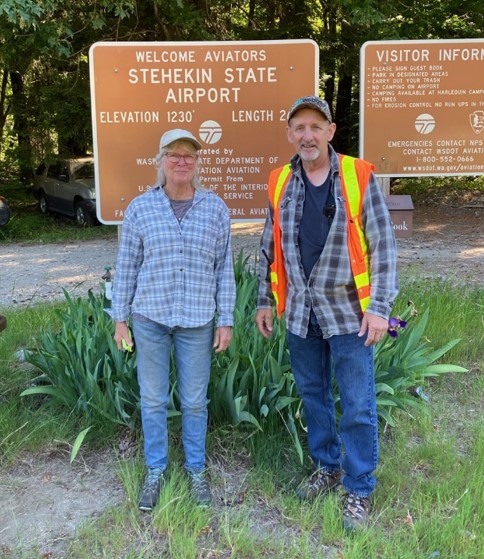
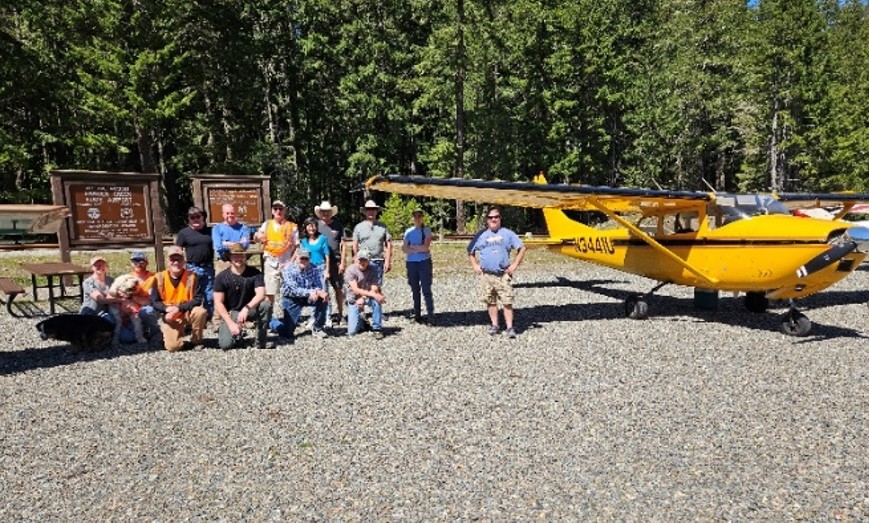
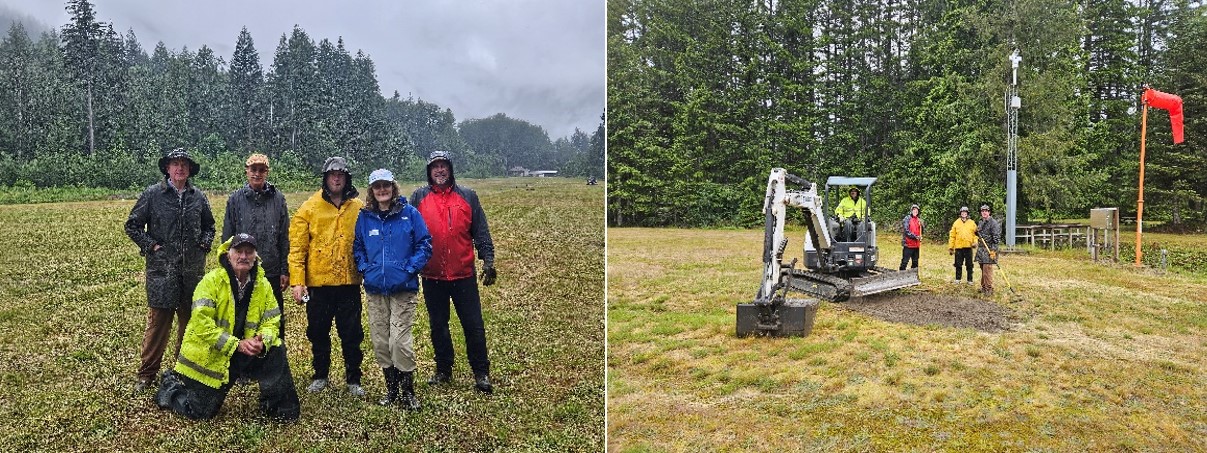
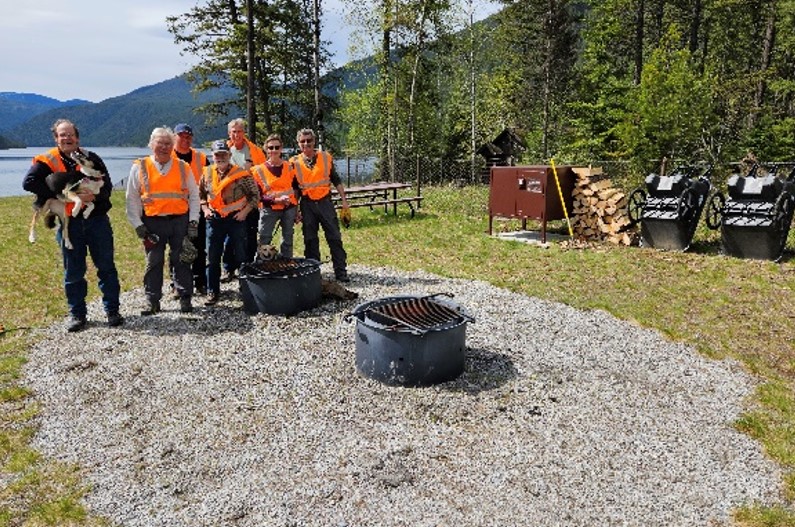
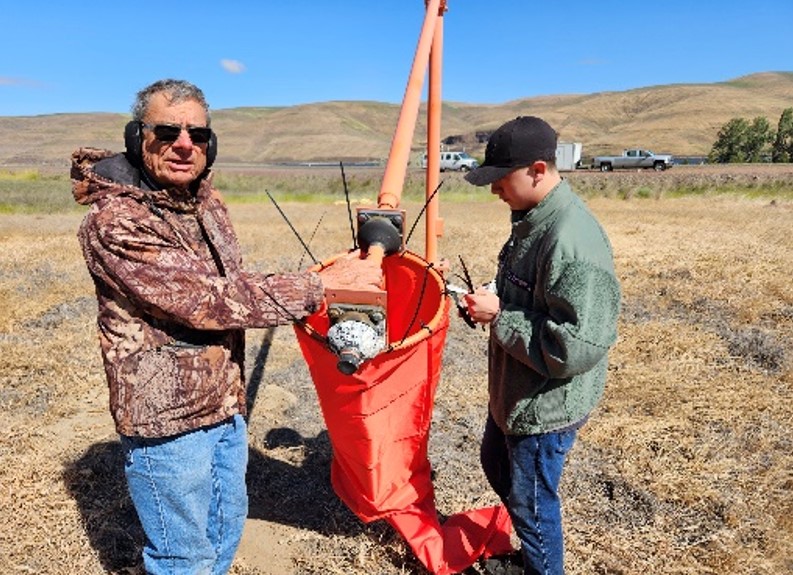

Fly Washington Passport Program
The Fly Washington Passport Program was started in 2019 to encourage pilots to explore Washington's public-use airports. Using an official Fly Washington Passport Program booklet, pilots collect "passport stamps" at participating airports. Participants earn levels of recognition and prizes as they explore the airports of Washington state.
The program's mission is to have pilots fly to airports they don't usually fly to and experience the local community. Local businesses and tourism benefit when pilots stay and have lunch or explore the area near the airport. Pilot's skills, confidence, and knowledge benefit, too.
The Fly Washington Passport Program is not a WSDOT program, but a collaborative partnership between:
- Auburn Municipal Airport,
- City of Auburn,
- WSDOT Aviation,
- Washington Pilots Association,
- Washington Airport Management Association, and
- Aircraft Owners and Pilots Association.
The program partners with sponsors to purchase the program's incentive awards and support program costs. Sponsorship funds are critical to the program as the availability of awards is strictly dependent upon sponsor donations.
As of November 2024, there were 115 participating airports. Pilots collecting 101 stamps (90% of participating airports) earn a flight jacket. The number of jacket winners increased to 64 with the start of the new year in 2025, with two additional pilots earning them.

2023
WSDOT-managed Methow Valley State Airport provides critical staging areas for wildfire management in 2023
The Methow Valley State Airport in Winthrop provided critical staging areas for helibase operations in 2023 for the Blue Lake and Rainbow wildland fires. The Department of Interior National Park Service (NPS) staged helibase operations at the airport to support firefighting efforts at the Rainbow wildland fire from July 11-14, 2023. The U.S. Department of Agriculture Forest Service (USFS) staged helibase operations supporting firefighting efforts at the Blue Lake wildfire over a period of 49 days in August and September.
Throughout the 2023 wildland fire season, the USFS Smokejumper base located at Methow Valley State Airport continued to play a critical national level role in fast-strike smokejumper base response efforts.
WSDOT-managed Methow Valley State Airport provides critical staging areas for wildfire management in 2023
Contributing to fast strike efforts, the Bandera, Easton, Lake Wenatchee, and Tieton state airports saw minor staging activity for quick turnaround refueling and resupply operations. Staging at the state-managed airports facilitates fast strike responses on developing wildfires. Pre-staging refueling equipment and supplies that are airlifted out to response teams allows federal, state, and local responders the ability to attack the fires sooner with the goal of reducing the chances that fires will grow much larger.
In 2023, WSDOT Aviation added the National Park Service as a fee-based user for helicopter staging operations at the state-managed airports. Land-use agreements established for the U.S. Forest Service, Department of Natural Resources, and NPS serve to bring in much-needed preservation and maintenance funds that can be used to support future helibase staging efforts.
For more information regarding state-managed airports or long-range planning efforts and associated preservation objectives, visit WSDOT's airport planning page.
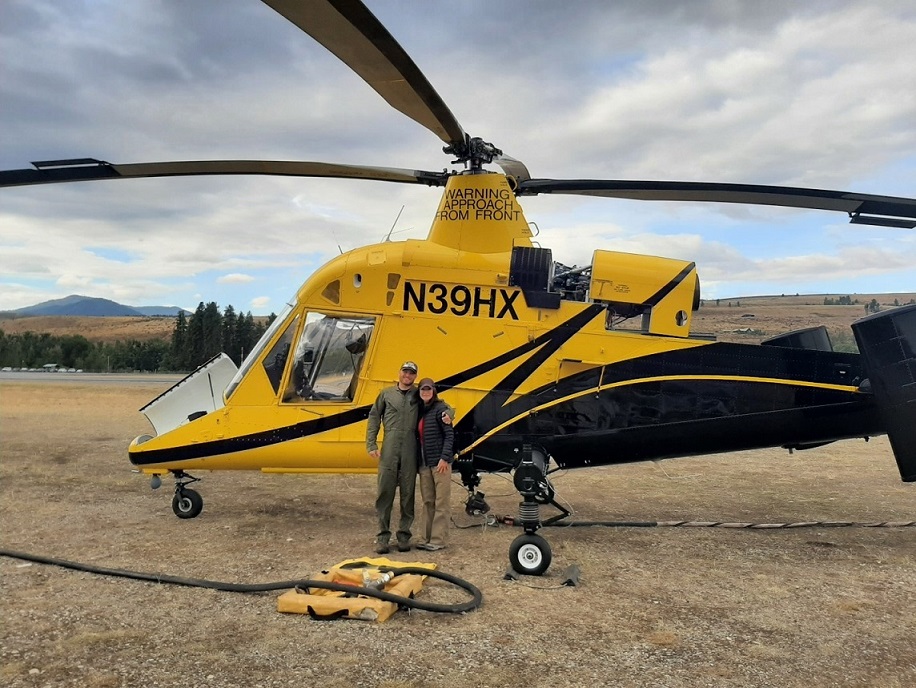
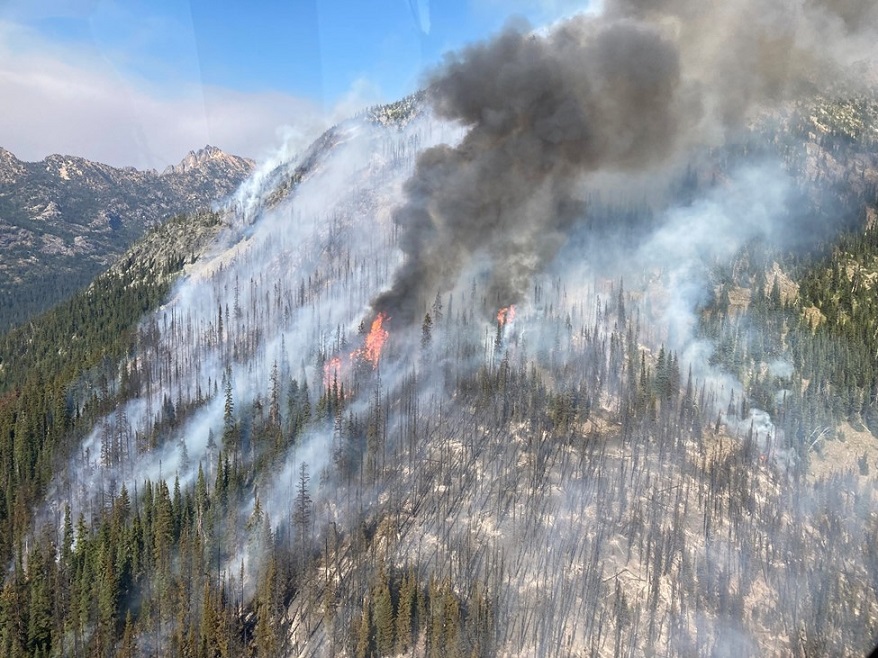
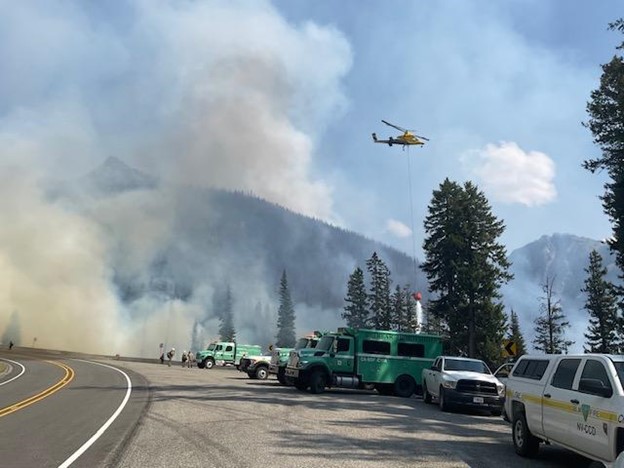
The collaborate Fly Washington Passport Program gains lift
The Fly Washington Passport Program started in 2019 to encourage pilots to explore Washington's public-use airports. Using an official Fly Washington Passport Program booklet, participants collect "passport stamps" at airports that volunteered to be part of the program. Participants earn levels of recognition and prizes as they explore the airports of Washington state.
The program incentivizes pilots fly to airports they don't usually fly to and experience the local communities. Local businesses and tourism benefit when pilots stay and have lunch or explore the area near the airport. Pilot's skills, confidence, and knowledge benefit, too.
The Fly Washington Passport Program is a partnership between Auburn Municipal Airport, City of Auburn, WSDOT Aviation, Washington Pilots Association (WPA), Washington Airport Management Association (WAMA) and the Aircraft Owners and Pilots Association. The program partners with sponsors to purchase the program's incentive awards and support program costs. Sponsorship funds are critical to the program as the availability of awards is strictly dependent upon sponsor donations.
As of May 2023, there are 112 participating airports. Collecting 101 stamps (90% of participating airports) earns participants a flight jacket; at the start of the new year, two more pilots earned their Fly Washington Passport Program flight jackets, bringing the total to 47 jacket winners.
Every Fall, the Fly Washington Passport Program holds a food drive. The friendly competition between airports brings in food to participating airports' communities. Last fall, over 20,000 pounds of food was collected at 11 airports, with Auburn Municipal being crowned the winner.

Commercial Aviation Work Group continues the work of the Commercial Aviation Coordinating Commission
The Commercial Aviation Work Group will evaluate the state's long-range commercial aviation and transportation needs, including alternatives for additional aviation capacity and expanding use of existing airports and multi-modal opportunities.
The work group will focus on use of new technology, environmental stewardship and resiliency in aviation. The group will use the previous information found during the Commercial Aviation Coordinating Commission as a baseline of information to continue their work.
2022
WSDOT-managed airports provide critical staging areas for wildfire management in 2022
A wet spring in Washington delayed use of the state-managed airports for wildland fire fighting staging efforts until mid-August, however, as seasonal conditions changed, the summer fire season extended well into October.
Three state-managed airports closed to the public in 2022 to accommodate critical helibase staging operations for several large wildland fires:
- The Lake Wenatchee State Airport was closed for two months to accommodate U.S. Forest Service managed staging operations for the White River Fire.
- The Tieton State Airport closed for 18 days to support the U.S. Forest Service fire fighting efforts on the Goat Rocks Fire, which shared helibase locations with the Packwood Airport.
- The Skykomish State Airport was closed for approximately 40 days to support fire fighting efforts at the Bolt Creek, Murphy Lake, and Loch Katrine fires.
Throughout the 2022 wildland fire season, the Methow Valley State Airport located in Winthrop (home of the U.S. Department of Agriculture Forest Service Smokejumper Base) continued to play a critical national level role in fast-strike smokejumper base response efforts across several states.
In 2022, WSDOT Aviation continued to negotiate formal fee-based access approvals for helicopter staging operations at the state-managed airports. These land-use agreement formats provided by the U.S. Department of Agriculture Forest Service and the Washington State Department of Natural Resources serve to bring in much-needed preservation and maintenance funds that can be used to support future helibase staging efforts.
For more information regarding state-managed airports or long range planning efforts and associated preservation objectives, visit WSDOT's airport planning page.
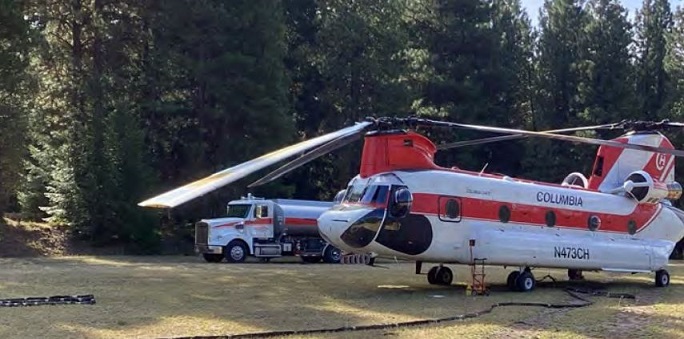
2021
WSDOT and Commerce collaborate to address aviation fuel shortages
As a result of the COVID-19 pandemic, the demand for aviation fuel fell to all-time lows. In 2021, the sudden increase in commercial air travel and the busy wildfire season caused an unprecedented aviation fuel supply shortages across the western states.
The increased fuel demand and supply chain challenges required the State Department of Commerce's Emergency Support Function 12 (ESF12) response team to be activated. The ESF12—part of Washington State's emergency incident management system— consolidated fuel shortage response efforts in collaboration with Washington Military Department, WSDOT, U.S. Forest Service, State Department of Natural Resources and other federal, state, and local stakeholders.
WSDOT Aviation and the State Emergency Operations Center played a critical role by implementing the "ReadyOp" communication tool, which allowed wildfire fighting helibase managers and participating airports around the state to quickly communicate critical fuel shortage and delivery information to the ESF12, ensuring the team could direct fuel shipments to areas of highest need.
WSDOT continues to identify strategies to build resiliency and preparedness across the state's airport system.
WSDOT airports provide critical staging areas for wildland fire management
In 2021, WSDOT-managed airports once again served as critical staging areas for statewide wildland fire management efforts.
In particular, the Methow Valley State Airport supported emergency helicopter staging efforts for the Cedar Creek, Cub Creek 2, Delancy, and Muckamuck Wildland fires and provided access for emergency response teams from across the nation.
The Methow Valley State Airport remained open to the public during the busy fire season. Temporary flight restrictions over the fires and close coordination between fire response crews and WSDOT Aviation kept the airport and airspace operations safe. Thick, hazardous smoke in the morning limited flight operations mostly to afternoon missions. Methow Valley State Airport is home to a U.S. Department of Agriculture Forest Service Smokejumper Base, which plays a critical role in faststrike firefighting response efforts. The Tieton State Airport—located at Rim Rock Lake near Naches— also played a vital role for wildland firefighting staging efforts and was closed to the public for over a month to allow response teams to battle the fast-spreading Schneider Springs Fire. Easton, Lake Wenatchee, Skykomish, and Stehekin airports also supported staging access for wildland fire management.
Commercial Aviation Coordinating Commission considers expanding airport capacity
Over the course of 2021, the Commercial Aviation Coordinating Commission (CACC)—charged with making recommendations to increase aviation to accommodate air passenger service, air cargo operations and general aviation—made significant progress towards meeting its requirements. The CACC collaborated with several stakeholders to help establish its guiding principles of public benefit, economic feasibility, environmental responsibility, and social equity.
Feedback indicated that 44% of those surveyed favored adding aviation capacity and acknowledged that doing so would require funding and potentially create environmental impacts; 36% supported increased aviation capacity only if environmental impacts were mitigated, and 19% supported continued operating with the current airport facilities. The CACC identified the following airports as having potential capacity to expand:
Paine Field has potential for additional commercial passenger service and air cargo capacity;
Bremerton National Airport has potential for air cargo capacity and general aviation capacity; and
Arlington Municipal Airport, Sanderson Field, South Lewis County Airport, and Tacoma Narrows Airport all have potential for additional general aviation capacity.
The Washington Aviation System Plan update is running concurrent to the CACC's work and will provide new airport location options for consideration in 2022. The CACC's final recommendations are currently due in February 2023.
2020
WSDOT airports provide collaborative training locales
WSDOT-managed airports hosted multiple agencies in 2020 for military, police, and rescue training activities.
The Tieton State Airport in Yakima County supported military mountain hoist training in June 2020 with the U.S. Army Air Ambulance Detachment from Yakima Training Center. They conducted hoist training in the area's mountainous terrain to simulate realistic scenarios, increase team efficiency and improve the effectiveness of interagency operations. The airport was also used for fueling operations to provide realistic hands-on experience for participants. Tieton State Airport also hosted forest firefighting staging operations in August 2020 that supported response efforts for the Cold Creek fire.
The Bandera State Airport in King County provided staging areas for helicopters that conducted construction lifting operations for the Puget Sound Emergency Radio Network tower installation project. State-managed airports provide critical staging areas to accommodate natural disaster response and training areas for military, law enforcement, and firefighting readiness. They also offer access to popular local recreational destinations for general aviation pilots and their passengers.
WSDOT completes Aircraft Electrification Study
The Washington Aircraft Electrification Study (completed in November 2020) identified many of the factors that will influence the adoption of electric aircraft. The study helps provide policy-makers, airport sponsors, industry and other stakeholders with a timeline for introducing electric aircraft into service as well as forecasting the demand for electric aircraft passenger service. It also identified workforce development needs and the environmental impacts of electric aircraft; finding that six airports were interested in focusing their planning efforts on becoming an electric aircraft beta test site.
Washington state is among the leaders in aviation innovation, with first flights of commercially viable electric aircraft taking place in British Columbia, Canada in 2019 and at Moses Lake in 2020. Electric aviation has the potential to connect communities in the state and region while reducing the impact of passenger and air cargo service on the environment. WSDOT is working to ensure airports and policy makers have the knowledge and tools to be ready to take advantage of this technology.
Fly Washington Passport Program taking off
The Fly Washington Passport Program promotes safety and education by encouraging pilots to visit Washington's public-use airports.
WSDOT launched the program in April 2019 to support general aviation airports, area businesses and tourism. It is a collaborative program administered jointly by WSDOT, City of Auburn, Auburn Municipal Airport, Washington Airport Management Association, Washington Pilots Association and the Port of Bremerton.
In 2020, nearly 2,000 pilots, passengers, and aviation enthusiasts participated in the program, up from approximately 1,000 in 2019. Participants said the program encouraged them to visit new locales via Washington's public-use airports. Sixteen participants have visited 100% of the 106 airports and seaplane bases included in the program.
Commercial Aviation Coordinating Commission continues engagement
In 2019, the Washington State Legislature established the Commercial Aviation Coordinating Commission. WSDOT Aviation coordinates and administers the commission, in addition to offering technical assistance as requested by commission members. By January 1, 2022, the commission will develop recommendations to meet critical aviation system capacity needs in Washington state. The commission will recommend a location for a new airport as well as additional ways to accommodate capacity needs at other facilities.
The commission worked throughout the COVID-19 pandemic and continued to evaluate potential airport sites. Although the commission cannot meet in person due to physical distancing, members continued to receive briefing materials and workbooks to help them formulate screening criteria that could be used to assess the suitability of various airport sites. During this time, the commission also engaged local jurisdictions to determine interest in future expansion of their local airports.
